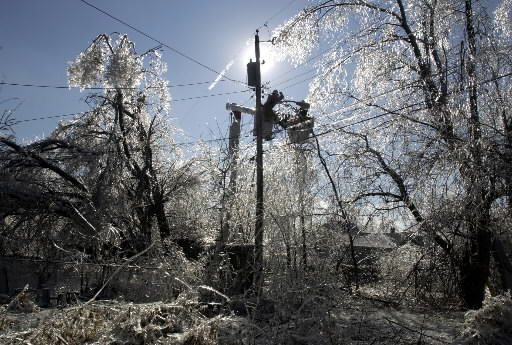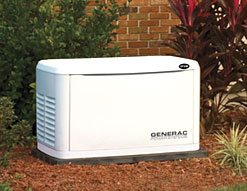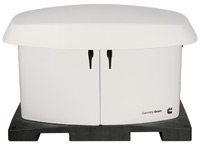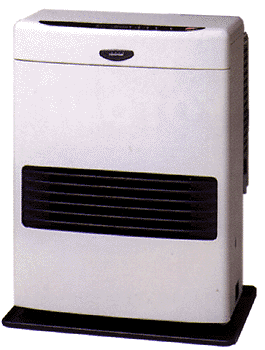Is your home designed to handle an emergency? Whether a natural disaster like hurricane or ice storm, or a man-made one like a rolling black out, there are steps that you can take to make your home and your family reasonably comfortable during a prolonged emergency and keep safe during a sudden event.
The Annual Readiness Quotient—a barometer of the public’s preparedness for a weather emergency, natural disaster or terrorist attack—increased in 2007 to 4.1 on a scale of 10 from 3.31 in 2006. The study conducted by the American Red Cross and The Council for Excellence in Government is a survey conducted to gauge consumer’s preparedness for emergency based on a 10-question survey. Take the test now to see what your EQ is.
The test identifies areas to plan and prepare for an emergency where you may need to evacuate from your home. But what about once the crisis is over and you need to return to and live in your home without the public water or electricity? For those of us who live in less populated or rural areas, power outages can be frequent and prolonged. Fortunately there are ways to design in features to your log home to ensure that your family can stay warm, cook food, communicate, and keep themselves clean until the lights come on.
 The Basics: Water, Heat, Light
The Basics: Water, Heat, Light
Many Mainers learned about emergency preparedness the hard way in 1999 when the devastating Ice Storm brought power lines down and kept many residents in the dark for weeks. Many were lucky to have had the basics available—water, heat and light— because of the normal precautions taken in a rural state. Homes that were equipped with wood stoves had heat; farms with artesian wells had water, and many had candles lanterns and flashlights for light in the winter nights.
But for all the benefits of technology and modern conveniences, sometimes the old ways are worth considering when planning for potential power outages for whatever reason. Solutions range from simple to the more complex, but you can prepare your log home to ride out an emergency in comfort.
Hand Pumps Provide Access to Water
One of the most important requirements for comfort in a home is a ready supply of water to cook, drink, clean and maintain sanitary conditions. Many Katahdin Log Home owners have a private well to supply water to their homes, powered by a submersible electric water pump. But when the power is out, the water has no way to reach the surface or your house.
One Houlton, Maine-based company, Bison Pumps, has designed a rugged, stainless steel hand pump that effortlessly installs alongside an electric pump on the wellhead. This hand pump can provide water when your electric water pump cannot. It features a unique spout threaded for a common garden hose. When the power fails, attach a hose from the pump to the exterior spigot on your house and you’ll be able to reverse-pump water to fill your holding tank for pressure to run faucets and flush toilets.
Water Storage for Emergency Use
The View From Up North recently reviewed a unique rainwater storage solution called the Rainwater Pillow (read article), which in warmer weather could provide non-potable water supply for washing up and toilets. The trick to using such a storage system is to place it in an area like a crawlspace or basement close to the house. In a true emergency, such stored water could be boiled or disinfected with bleach to drink.
Emergency Power Options
Many homeowners are planning for power outages by setting up access to alternative sources of electricity. One fairly simply step when building a new home in a rural area—especially a heavily forested one—is to take all your utilities underground. As a rule, utilities work from the top down: major transformers, main transmission lines, power lines on primary roadways and finally, private homes. If you are at the end of a private road you can reduce the time spent without power if your utilities are buried out of the way of ice, falling limbs and wind. Make sure you coordinate with power, telephone and cable companies to trench for all services at once.
Another relatively easy solution is to have your electrician install a transfer switch designed to hook up to a gasoline-, diesel-, or propane-powered portable generator. The transfer switch offers the option of keeping the essentials on with six to eight circuits for refrigerator, furnace, air conditioner, well pump, security system, lights and other necessary electrical items. The upside to these transfer switches is that they’re available to use in an emergency, and the portable generators used to power them are not expensive and easy to maintain.
 Stand-by Generators
Stand-by Generators
If you are building in a hurricane zone, in an area which suffers from frequent cold weather power interruptions or you require continuous power, a residential standby generator fueled by propane or natural gas may be an option to consider. Unlike portable generators, these standby units are installed to automatically deliver power to essential circuits and automatically shut down when power is restored.
Most of these units are about the size of a residential air conditioner unit and are installed directly linked with the transfer switch or load center, which will in turn keep essential circuits powered. Stand-by units can offer considerable peace of mind: they are powered by either natural gas in urban areas or by liquid propane in rural areas. A rural homeowner can easily accommodate the capacity of a larger propane tank to power a stand-by generator as the tanks are most often buried below grade and out of sight. Generac Power Systems offers a generator sizing tool on its website to help determine how big a unit you’ll need. Cummins Onan is another company that produces residential standby generators, which feature quiet “neighborhood friendly” operation. When researching standby or portable generators, make sure you ask the dealer who is available in your area to service the generator. Finding a small engine repair shop to service a portable generator may be easier to find in some areas than a service contractor for the more complicated electronics of a stand-by generator, despite its convenience.
that produces residential standby generators, which feature quiet “neighborhood friendly” operation. When researching standby or portable generators, make sure you ask the dealer who is available in your area to service the generator. Finding a small engine repair shop to service a portable generator may be easier to find in some areas than a service contractor for the more complicated electronics of a stand-by generator, despite its convenience.
Alternative Sources of Heat in Emergencies
During the Ice Storm in 1999, many Mainers were able to use wood stoves to keep their homes warm and prevent pipes from freezing. If you plan to have a wood burning heat source— fireplace, outdoor wood-burning hydronic heater, woodstove or pellet stove— you’ll need to ensure that you have enough seasoned wood or pellets to keep this alternative source going for at least three to four days.
 Another options for emergencies is a portable kerosene heater, but these need to be used with extreme care. The danger of fire is a fairly obvious one, but a bigger danger is the gases released with the kerosene combustion. It is recommended that a window be cracked open one inch to ensure enough air exchange to avoid unsafe air quality. If you plan on having an alternative power source available, a kerosene heating unit installed and vented on an exterior wall may be a better option. Check out Toyotomi room-sized kerosene heaters as a back-up source of heat. Kerosene heaters will need to be powered up, but will provide a quiet and clean-burning back-up heat source.
Another options for emergencies is a portable kerosene heater, but these need to be used with extreme care. The danger of fire is a fairly obvious one, but a bigger danger is the gases released with the kerosene combustion. It is recommended that a window be cracked open one inch to ensure enough air exchange to avoid unsafe air quality. If you plan on having an alternative power source available, a kerosene heating unit installed and vented on an exterior wall may be a better option. Check out Toyotomi room-sized kerosene heaters as a back-up source of heat. Kerosene heaters will need to be powered up, but will provide a quiet and clean-burning back-up heat source.
Safe Room Options
If you’re in an area of the country where high winds in the form of tornadoes or hurricanes are a concern, you may want to consider incorporating a safe room in your home. One company, RemagenSafeRooms, offers modular options that can be installed in new construction or retrofitted into an existing structure, such as a closet or garage. Interestingly the Federal Emergency Management Administration (FEMA) recommends that homeowners not take shelter in basements, because of the danger of structural collapse. FEMA’s website covers many aspects of safe rooms, and has tips and guidelines for location, size and other factors.
Communication is Key
In an emergency communication can be difficult, but never more important—reaching emergency services, contacting family and friends, arranging for insurance. If you live in an area where power outages are frequent, you may want to consider a landline telephone that does not require electricity to power it. Most portable phones, though battery-powered, require that the base be electrified to work. Cell phones may lose battery power quickly so, you’ll need a way to recharge them. One neat way to keep smaller devices charged up is the Sunlinq 12 Volt Solar Panel. It’s a flexible solar power unit that weighs less than a pound and can be rolled up to store in an emergency kit. You’ll need to purchase adapters for your PDA, cell phone or other small electronic devices. Also, don’t forget that you automobile is a ready-made power source for charging flashlights, or cell phones. Inexpensive adapters that plug into a cigarette lighter can provide the charging you need in an emergency.
Planning for an emergency is time well spent. Though we certainly hope to never have to use them, making sure that water, heat and light are always available can make a difference in a difficult time.
